Bucker Bu 131 D
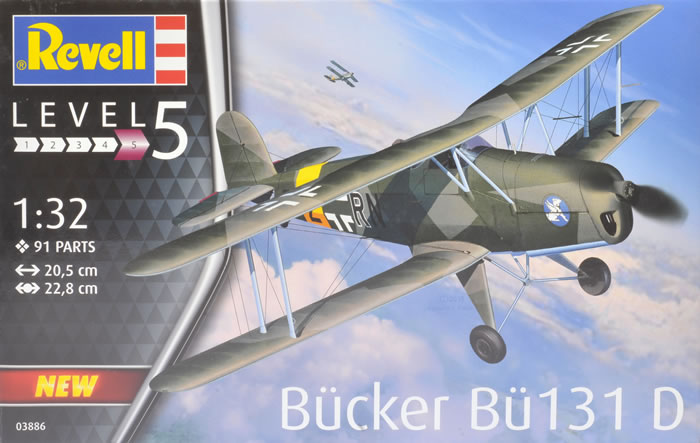
Revell, 1/32 scale
S
u m m a r y |
| Catalogue Number: |
Revell Kit No. 03886 - Bucker Bu 131 D |
| Scale: |
1/32 |
| Contents and Media: |
87 parts in grey plastic; four parts in clear; markings for two aircraft. |
| Price: |
£29.99 EU price (£24.99 Export Price) plus shipping available from Hannants |
| Review Type: |
FirstLook |
| Advantages: |
Clean moulding; nice surface textures; poseable crew doors; separate cowlings to allow the engine to be displayed; straightforward parts breakdown. |
| Disadvantages: |
|
| Recommendation: |
Revell’s 1:32 scale Bucker Bu 131 D is a really nice looking kit. It should be quite straightforward to build and detail is good. |
Reviewed by
Brett Green

Revell's 1/32 scale P-51D Mustang will be available online from Squadron.com
Sturdy and agile, the Bü 131A was first delivered to the Deutscher Luftsportverband (DLV). The Bü 131B was selected as the primary basic trainer for the German Luftwaffe, and it served with "virtually all" the Luftwaffe's primary flying schools during the war, as well as with night harassment units such as Nachtschlacht Gruppen (NSGr) 2, 11, and 12. Yugoslavia was the main prewar export customer; as many as 400 may have found their way there. She was joined by Bulgaria with 15 and Romania with 40.
Production licenses were granted to Switzerland (using 94, 88 built under licence to Dornier), Spain (building about 530 Hungary (which operated 315), Czechoslovakia (10, as the Tatra T 131, before war began), and Japan, the last of which built 1,037 for Army with Hatsukaze power as the Kokusai Ki-86 and 339 for the Imperial Japanese Navy Air Service (IJNAS) as the Kyushu K9W. In Spain, production continued at CASA until the early 1960s. The Jungmann was retained as the Spanish Air Force's primary basic trainer until 1968.
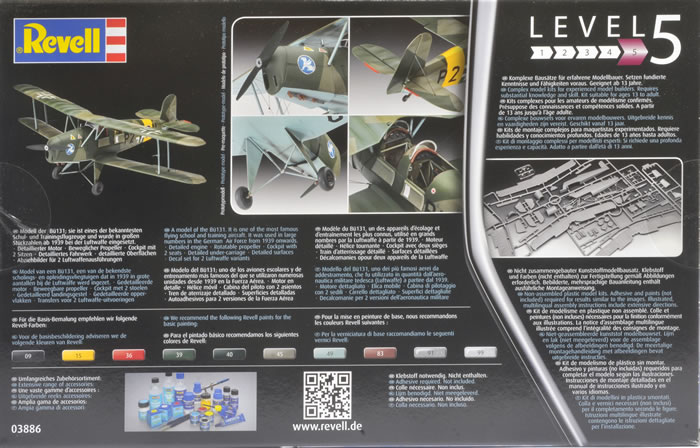
In the 1960s and early 70s the Spanish, Swiss and Czech governments sold their Jungmanns to private owners many being exported to the United States. About 200 Jungmanns survive to this day, many having been fitted with modern Lycoming O-320 (150 hp) or O-360 (180 hp) four cylinder engines with inverted fuel and oil systems for aerobatic flight.
Current owners and pilots prize the Jungmann for its outstanding handling characteristics when compared to other antique bi-planes and even more modern aerobatic types. Upkeep and maintenance for the Jungmann is comparable to other antique aircraft and is superior when fitted with the Lycoming engines. Airframe parts are available from several sources both in the United States and Europe.
In 1994, the Bü 131 was restored to production briefly using CASA jigs by Bücker Prado in Spain, with 21 aircraft constructed as the BP 131, while SSH Janusz Karasiewicz in Poland also started production of a version of the Jungmann based on Czech plans in 1994. After the deceased Janusz Karasiewicz the Polish company Air Res Aviation continues the production of the Bücker Jungmann. 20 were manufactured in Poland in 1994–2000. *
ICM released their 1/32 scale Bucker Bu 131 D Jungmann during 2018, and now Revell has rebadged the kit with their own brand.
As far as I can tell the plastic sprues are the same, but we benefit from Revell's nice big colour instruction booklet and Cartograf printed decals.
Revell's reboxed 1/32 scale Bucker Bu 131 D comprises a modest 87 parts in grey plastic, four parts in clear and markings for two aircraft.
The grey parts are provided on just two sprues. The quality of the plastic looks very good with no imperfections on my sample.
These rag and tube biplanes were simple designs and the kit replicates the front office nicely with side, front and rear framing, throttles and other sidewall fittings, rudder pedals, tandem control columns, seats, instrument panels and coaming.
The instrument panels are clear parts, so if you feel inclined you can apply forward facing dials to the back of the panel and carefully paint the bezels and panel on the front. Alternatively, you can simply paint the panels and apply the decal for the dials that is supplied on the kit's decal sheet.
The other two clear parts are the windscreens.
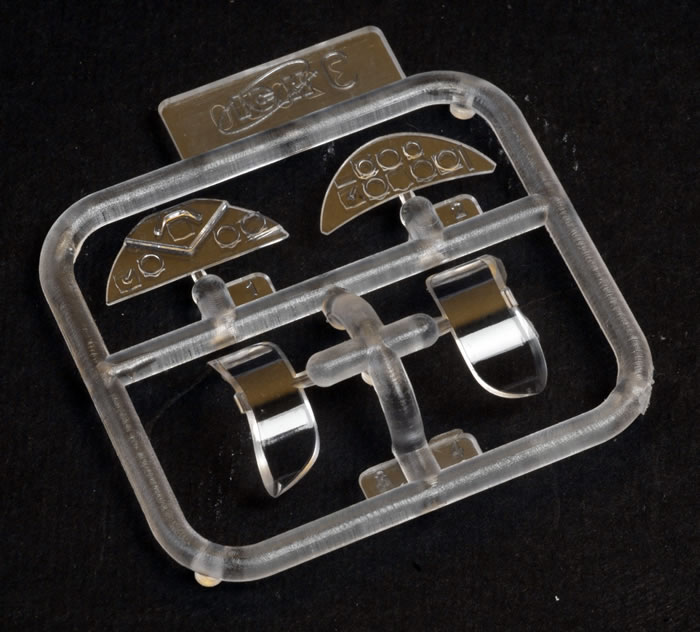
Harness straps are printed onto the decal sheet. I'd recommend cutting the belts out with the backing paper still on to better represent the fabric. There are plenty of photo-etched and fabric options available from Eduard and others too.
The entry doors for both crew members are separate parts that may be posed open or closed, so your efforts will be visible if you add some extra detail to the cockpit, .
The engine is made up from just 12 plastic parts including the mounts, but detail is more than adequate. The upper and lower engine cowlings are separate parts, so you can display the engine if you wish.
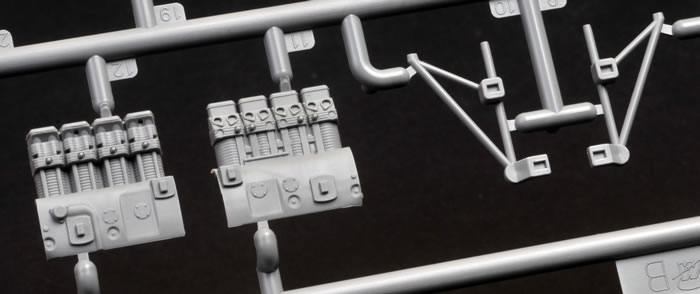
The upper wing is broken down into full span upper and lower halves, while the bottom wing is supplied as a full span lower half and separate pieces for port and starboard upper sections. The wing surfaces feature wide scalloping that represents the fabric strtched over ribs.
All control surfaces are supplied separately and may be posed to taste.
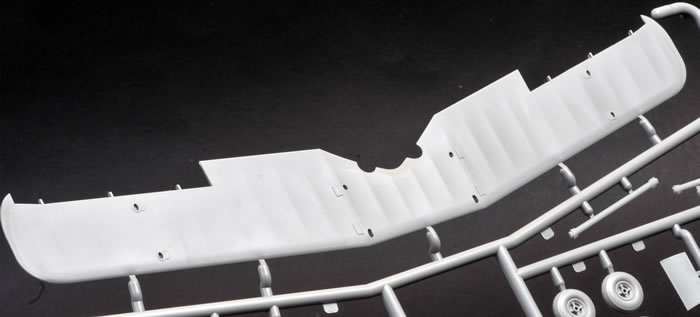
Cabane struts are each one-piece N shapes, while the four interplane struts are all separate parts. The wings and fuselage feature deep locating holes for the strut locating pins.
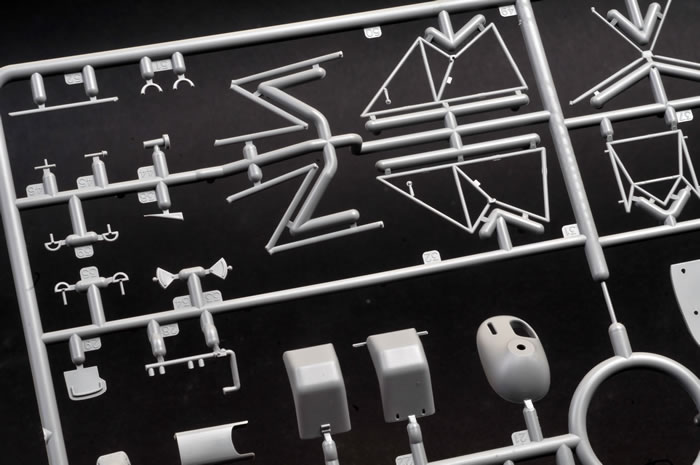
The undercarriage is fairly simple with two triangular legs and a single moulding for the four bracing struts.
The instructions are supplied in a 20 page A4 booklet over 51 construction steps. The painting guilde is in full colour with callouts for Revell paints only.
The instructions supply side and front view diagrams to assist with the location of the rigging.
Markings
Decals are perfectly printed and the colours look good. They are designed by AirDOC and printed by Cartograf. The decal sheet is flat in finish.
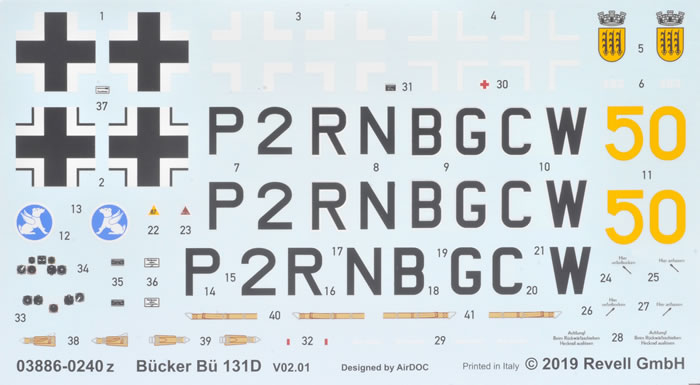
Markings are supplied for two aircraft:
-
Bucker Bu 131 D, P2+RN, 5(H)/21, Rama-Ruska, Russia, 1 July 1941. Finished in RLM 65 Light Blue lower surfaces and RLM 70 Black Green and RLM 71 Dark Green on the upepr surfaces with a wide yellow theatre band on the rear fuselage.
-
Bucker Bu 131 D, BG+CW, Wknummer 483, FFS(A)43, Crailsheim, June 1944. Finished in RLM 65 Light Blue lower surfaces and RLM 71 Dark Green on the upper surfaces.
Revell’s 1:32 scale Bucker Bu 131 D is a really nice looking kit. It should be quite straightforward to build and detail is good.
* Historical summary courtesy of Wikipedia
Revell model kits are available from all good toy and model retailers. For details visit www.revell.de/en, @RevellGermany or facebook.com/Revell
Review Text and Images Copyright © 2019 by Brett Green
Page Created 11 July, 2019
Last updated
12 July, 2019
Back to HyperScale Main Page
Back to Reviews Page |
